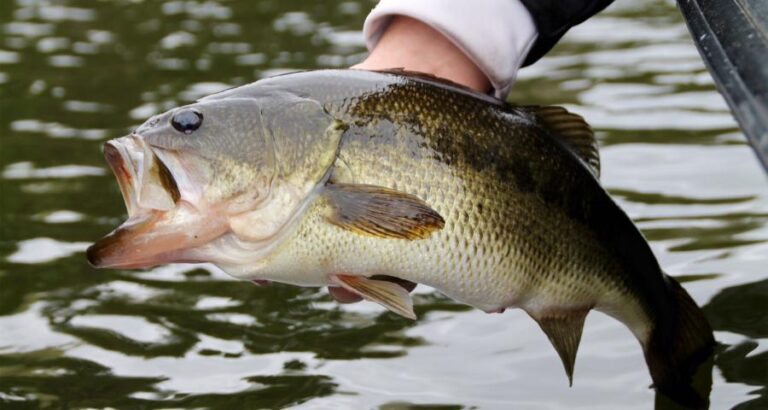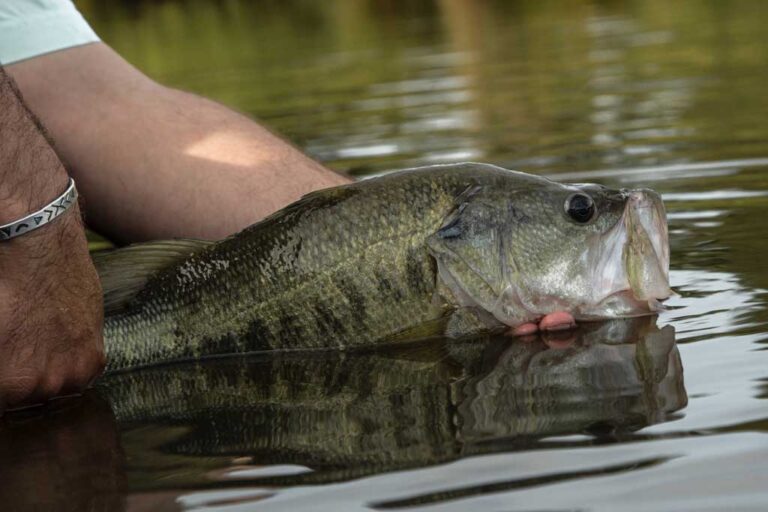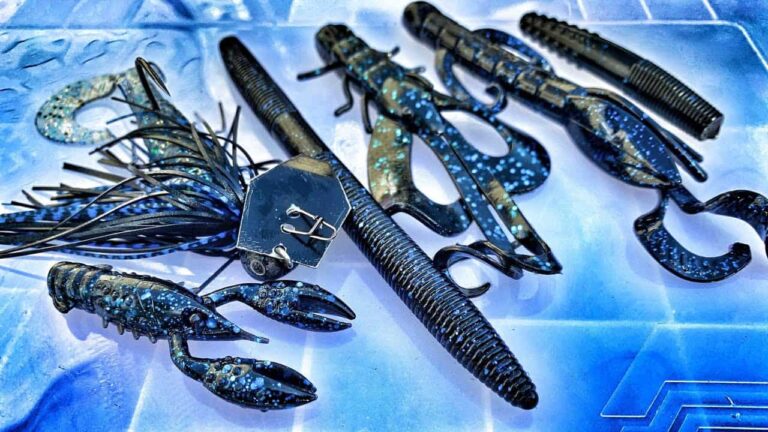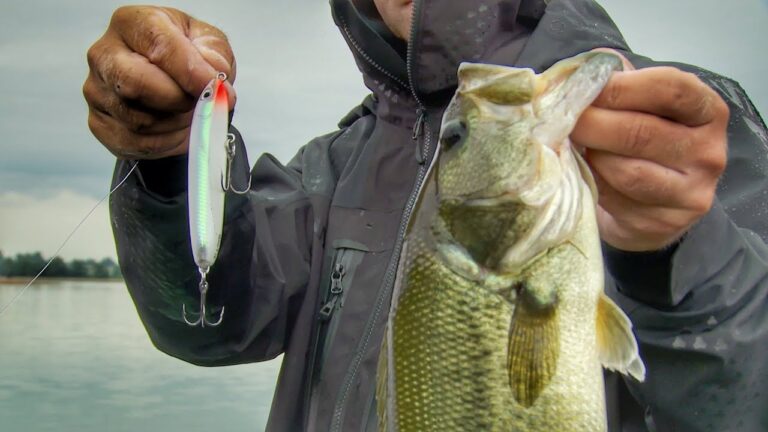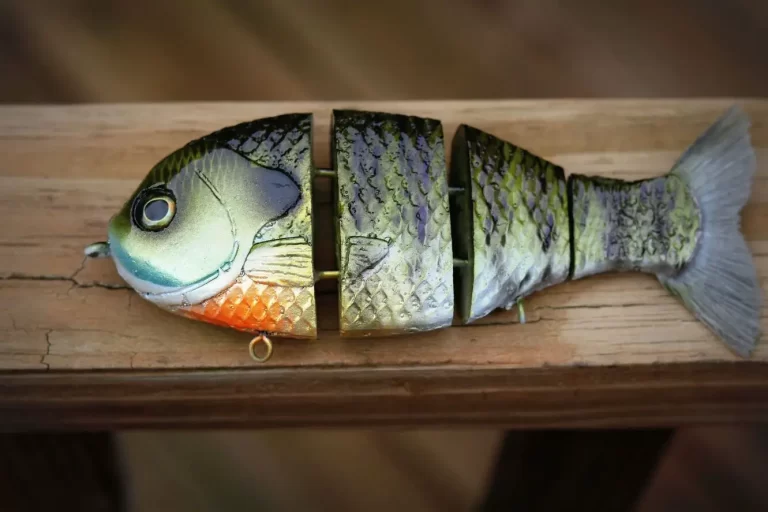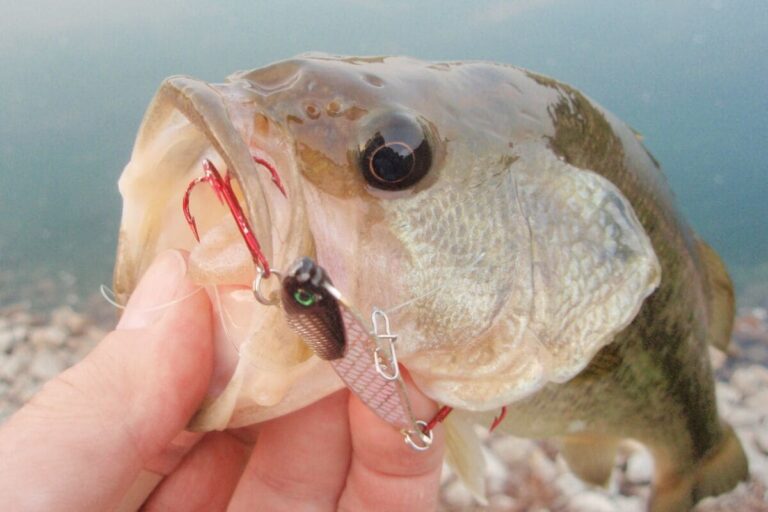The 3 Best Lipless Crankbait Colors
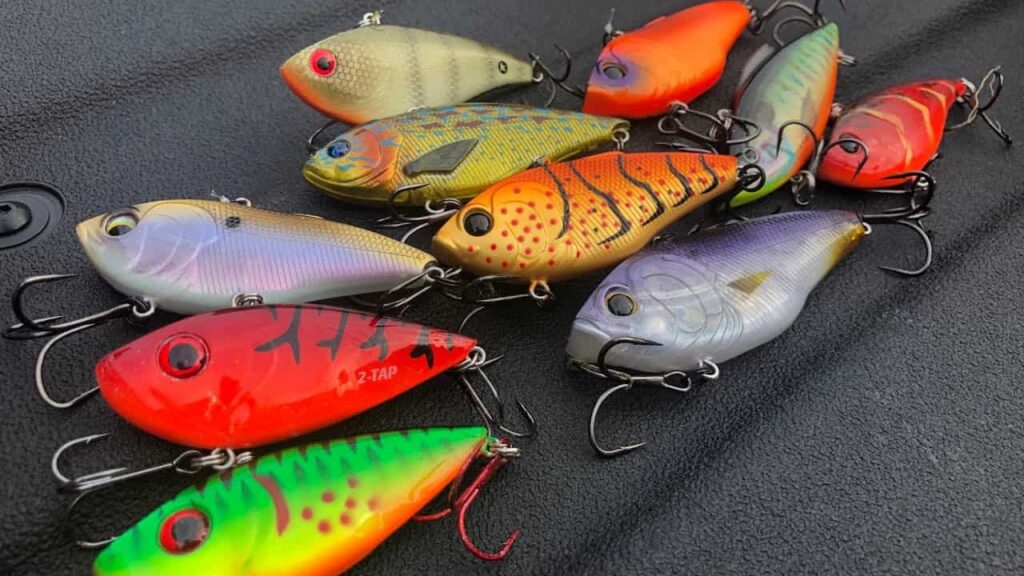
The lipless crankbait is an incredibly versatile lure and will catch bass all year round.
And with tons of guys throwing a lipless these days, being able to really dial in the exact lure profile is key to getting bass to bite, especially on pressured lakes.
And color is one of the biggest factors when trying to dial in your lipless crankbaits. Let’s check out the best lipless crankbait colors.
Let’s Keep It Simple
When it comes to colors, I pretty much always prefer to keep them as simple as possible. That’s why I have narrowed it down to the top 3 lipless crankbaits.
I believe that if one of these three colors aren’t working, than it isn’t the color that is the problem, and you need to change something else.
1. Silver / White
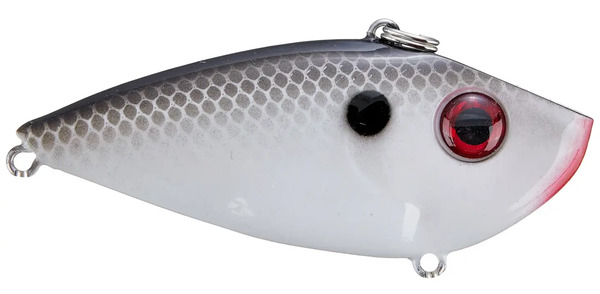
Silver or white (the popular “Sexy Shad” color also falls into this category” is by far my favorite color for lipless crankbaits.
When you are using a lipless, you’re really trying to imitate a small baitfish. And small baitfish are pretty much always a silvery color.
Shad, minnows, and shiners are the best example of the silver colors. But even young bluegill (the bluegill that are the same size as a lipless) haven’t yet developed all of their green, yellow, orange, and blue colors yet.
Young bluegill are pretty much just a silver or white color. So a silver colored lipless crankbait is generally going to be the most natural and realistic color.
These colored baits are also very reflective which flashes the light from the sun and draws the attention nearby bass very well.
This makes the flashy silver baits tremendous for clear water, sunny fishing conditions where that reflection can best be seen by the bass.
Overall, if I could only choose one color for the rest of my life, it would certainly be a silver type of color.
2. Red
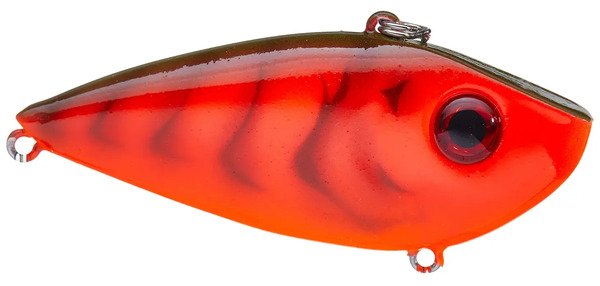
When fishing both lipped and lipless crankbaits, the color red is renowned by all anglers as a fantastic lure color.
There are a few reasons and theories behind why red baits work so well, but most of them stem from one simple fact.
Out of all the colors, bass can see red the easiest. Their eyes pick up red light waves extremely well, so red lures stand out very well to them and give bass an easier target to eat.
I have found this is especially important when fishing lipless baits because a lipless moves quite fast in the water. Bass don’t have all day to find and track down this lure.
So when bass are in an aggressive mood, giving them a very easy target helps them track down and eat the lure much quicker.
The best times to use a red lipless is during low visibility water conditions. Generally this means cloudy days, muddy water, or morning/evening hours.
These conditions are why red is by far the most popular lure color for the spring fishing season.
Because of the spring rains this time of year, there are often lots of clouds in the sky and the water gets very muddy because of all the run off.
3. Bluegill / Perch
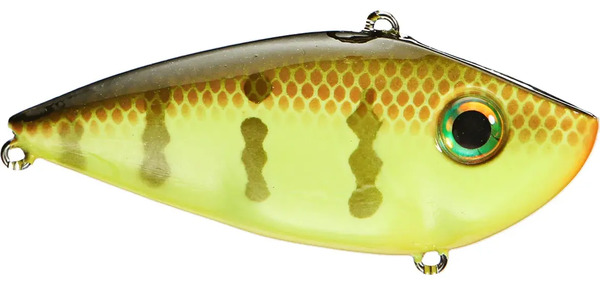
Some companies call it a bluegill color and others call it a perch. But really I am referring to light green styles of colors like you see above.
I use these a lot when I am fishing ponds or small lakes that don’t have tons of shad or shiner. In these bodies of water, bluegill (or up north, perch) are the main forage for bass.
So to match the hatch, I use a bluegill / perch colored lipless crankbait. Another time these colors work great is when fishing very shallow water during the post-spawn to summer months.
This time of year, even on lakes that do have shad, the bass up in the shallow water are mostly eating bluegill.
I have found that during those very warm months, a bluegill / perch colored lipless crankbait works extremely well.
When to Switch Colors
Sometimes the toughest part is not choosing which colors to use, but when to switch it up to maximize your success.
The first sign that you should switch colors is when bass are short striking or just nipping at your bait.
If you see bass coming up behind your lure but not actually eating it, most likely this means your color isn’t quite right and you should switch to one of the other two.
Also, if you are catching some bass but they are barely hooked on the back treble, that is also a sign. These bass are just barely nipping at the bait and not fully trying to engulf it.
A quick color change can get these bass to really attack the bait and it will be stuck with both hooks in its mouth. And lastly, if you aren’t catching anything, a color change might be necessary.
If you aren’t getting any bites at all, try switching colors for a while and see if that helps. If you still aren’t catching anything, consider changing locations or changing lures all together.
Also Read: The Best Lipless Crankbaits in 2025
Reeling this In
Don’t overcomplicate your lure colors. There are enough factors in bass fishing to keep straight that you don’t need to add too many colors to your arsenal.
Just focus on mastering these three colors by fishing them as much as you can. Trust me, these colors are really all you need for lipless crankbait fishing.

